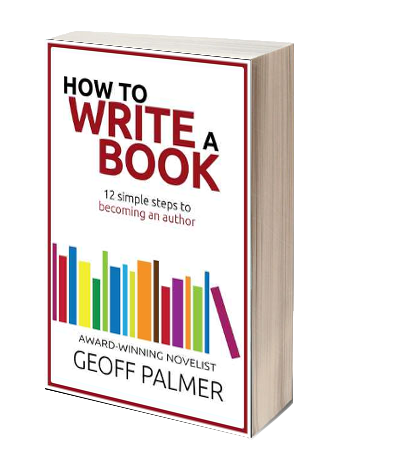12 Simple Steps to Becoming an Author

I want to write a book. Where do I start?
Are you thinking of writing a novel or a nonfiction book but aren’t sure where to begin? Perhaps you’ve heard of the Snowflake Method, the 30-Day Method, the 5-Draft Method, outlining, plotters and pantsers, but are just having trouble fitting writing into your life.
This is the writing guide to get you going!
Maybe you’ve already started a book – once, twice, several times – yet somehow drifted away, lost focus, lost momentum, and ended up dumping your manuscript in the too-hard basket.
This is the writing guide to get you back on track!
12 simple steps to becoming an author
Divided into three easy stages, How to Write a Book has 12 simple steps that take you through the process of writing from start to finish.
Part 1 : Getting Started explores the tricks of the mind that stand in the way of a would-be writer. From finding the time, to dealing with distractions, battling Resistance, what to do when your mind’s a blank, and even writing with a tomato!
Part 2 : Keeping Going. Most novels are abandoned one-third of the way in. Find out why. And find out what you can do when you hit The Wall, strike writer’s block, or are trapped in the tyranny of constant changes.
Part 3 : Letting Go. The tricks of the mind don’t stop once you type THE END. This part looks at the quest for perfection (and how to handle it), dealing with rejections, and what to do once you think you’re done.
Bonus chapter: A special bonus chapter deals with what you should write, the business of writing, being a guinea pig, doing a Nanowrimo (“write a novel in a month”), the three Ps (Practice, Productivity and Professionalism), and what being a successful writer really means.
Write the novel you’ve always dreamed of writing. Start today!
Excerpt from the Introduction:
On 1 September 1995, Jim Grant sat down to write. He’d never written a novel before and, having just been made redundant from his job at Granada Television, reckoned he’d have to earn himself a laptop. So he went out and bought three pads of paper, a pencil, a pencil-sharpener and an eraser, investing the princely sum of £3.99 in his new vocation. Then settled down to work. Long-hand.
The book he wrote – called Killing Floor – earned Grant a laptop all right, and a great deal more. It, and his subsequent books, have regularly topped the bestseller charts for the last twenty years. But you probably don’t recognise his name. That’s because Grant writes under the pseudonym Lee Child.
My aim in opening with that story wasn’t to add to the mythology of Jim Grant/Lee Child, or to help him sell more books. (He seems to be doing okay without my assistance.) What I wanted to emphasise was the writer’s basic tools:
• pads of paper
• a pencil
• a pencil-sharpener
• an eraser
That, really, is all you need. And it’s all writers have needed for centuries.
It’s easy to find reasons for not writing. You don’t need a new laptop with terabytes of disk space and monitor large enough to be seen from the Moon. All you really need is £3.99’s worth of supplies. (About $5 in the US.)
If you have a typewriter, great. A computer of some sort’s even better. But neither of those things are essential. All you need is some method of recording your thoughts. A pencil and paper work fine. Just ask Lee Child.
